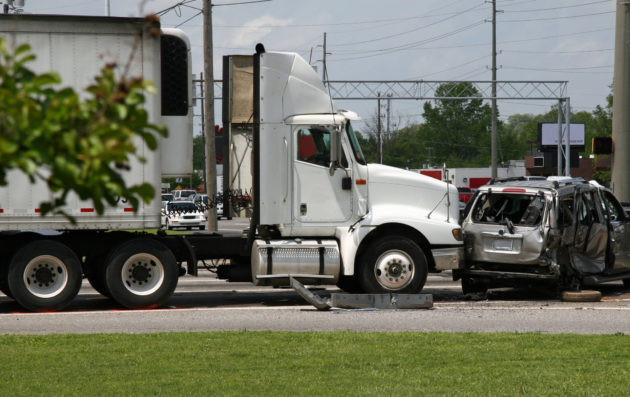UPDATED: Truck insurance review underway

TORONTO, Ont. — A national review by Facility Association – an insurer of last resort for fleets that can’t secure coverage elsewhere – is looking to keep trucking companies from misrepresenting themselves when negotiating insurance premiums.
The Ontario Trucking Association (OTA) and selected insurers began to shine a light on the potential challenge last year, following reports that a growing number of truck fleets were being covered by Facility Association. A formal meeting of the two groups was held in May.
Facility Association’s commercial insurance premiums rose an astounding 47% in the 12 months leading up to March 2019, and those linked to interurban vehicles were up 200%.
“When we see a growth in any given sector, it’s a heads-up for us to look more closely,” says Saskia Matheson, Facility Association’s president and CEO. “We want to make sure we are charging the right and fair price.”
Some of the growth is believed to be linked to carriers that are misrepresenting where they are actually based. A fleet that does most of its business in Ontario, for example, might tell Facility Association that it’s based in New Brunswick.
The problem emerges because the insurance premiums are based on risk. If the high-risk fleets insured by Facility Association file more insurance claims than expected, the extra costs are absorbed by the rest of the insurance industry. Those insurance providers then need to increase the rates paid by their customers.
“Where the vehicle is used is important to determining risk,” Matheson says. Other factors include how many trucks are run, and the length of time they’re on the road.
“When applied for an issued properly, insurance with Facility Association has a legitimate and important role in supporting the trucking industry,” said OTA president Stephen Laskowski. “Our goal in partnering with the Facility Association is not to eliminate these legitimate uses, but rather to review with insurance regulators the existing Commercial Residual Market insurance policy framework – and ensure the proper rating of carriers that reflects road safety and fleet responsibility in this market.”
Other groups now involved in discussions include the Alberta Motor Transport Association (AMTA).
The national review is scheduled to conclude this fall, with revised rules to be in place by the close of the year, subject to regulatory approval, Matheson says.
The OTA’s own Facility Association Commercial Underwriting Working Group began to meet in June, and will continue working throughout 2019 to review specific technical issues relating to underwriting rules and procedures. It wants to make recommendations regarding underwriting rules, documentation requirements, a fraud mitigation strategy, audit strategy, and key risk indicators.
Facility Association emerged in the 1970s, after governments began to mandate automotive insurance. The insurer of last resort now operates in Alberta, New Brunswick, Newfoundland and Labrador, the Northwest Territories, Nova Scotia, Nunavut, Ontario, P.E.I., and the Yukon.
The rising cost of truck insurance, and the challenge of getting coverage in the first place, was recently highlighted during a rolling protest by a group of Toronto-area aggregate haulers.
They’re among a growing list of fleets and owner-operators who face higher premiums as insurers re-evaluate the risks they’re willing to cover. Some insurers are simply stepping away from trucking industry sectors thought to represent an unacceptable risk – like the aggregate haulers serving construction activities in and around Toronto.
Truck insurance claims have generally been rising quicker than original projections because of factors such as pricey legal settlements and technology-laden trucks that can be costly to repair.
Have your say
This is a moderated forum. Comments will no longer be published unless they are accompanied by a first and last name and a verifiable email address. (Today's Trucking will not publish or share the email address.) Profane language and content deemed to be libelous, racist, or threatening in nature will not be published under any circumstances.
Well this new wave of insurance hikes is not surprising remember big companies self insure it’s effecting the little guy every one is in a rush because of technology you can color coat it but it is what it is
As much as I would like to blame the Insurance companies regarding the rising insurance costs in the trucking industry, I have to say that it is the trucking companies who chiefly have to blame themselves for the failure to police themselves regarding safety issues. How many episodes of Heavy Rescue 401 or Highway Through Hell does one have to watch in order to come to the conclusion that too many truck drivers behave like complete and reckless idiots, who lack forethought and concern for the well-being of the motoring public? I also blame the lack of policing in Canada. The USA are doing a much better job in this regard, with state troopers etc. looking after traffic safety in a meaningful way. I much prefer to drive on a US road than anywhere in Canada (note: I have held a Class 1 licence since 1977 – so I have some basis for my opinions in this matter). As soon as one crosses the border back into this country, the outrageous driving behaviour by truckers and other drivers alike becomes instantly noticeable, especially in BC – despite the dangerous mountain roads. Seeing the gravel haulers in Ontario protest high insurance rates was a laughable spectacle. Don’t they realize that the high rates, to a significant extent, are their own doing? As long as Canadian truckers don’t get a grip on themselves, the rates will go up — and I see no indication yet that Canadian truckers understand that. Too many are still behaving like idiots.